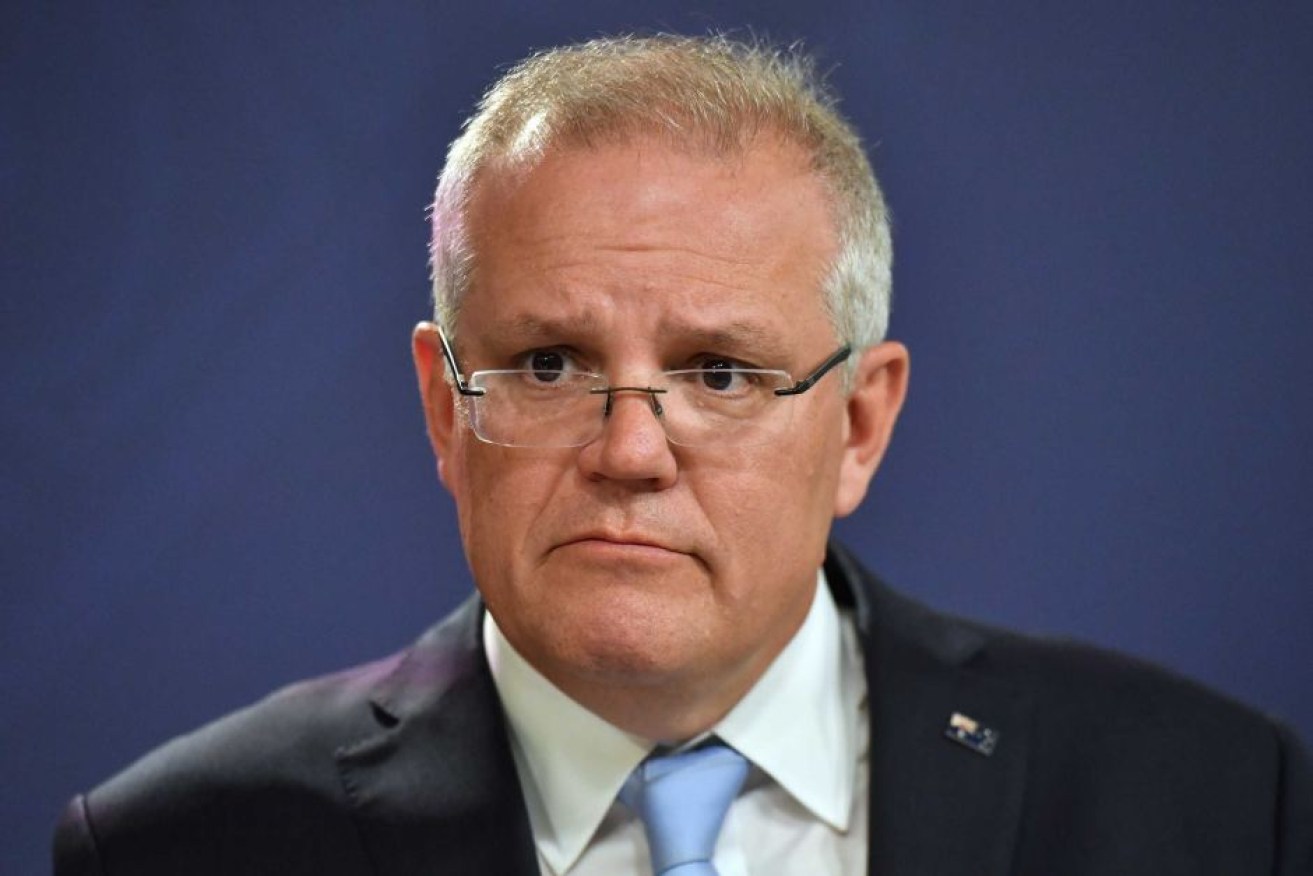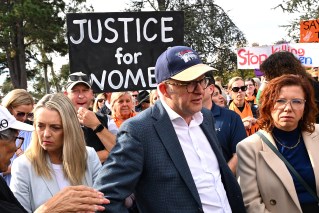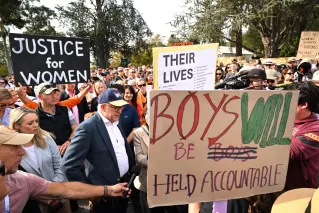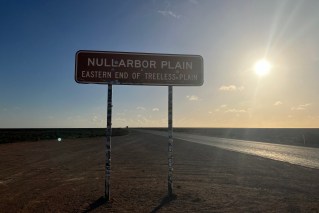Scott Morrison has been gifted an energy alibi, right when he needs it most
There are those within the ranks of the Coalition, particularly in Queensland, who will tell you that last year’s election result was the outcome of divine intervention.

Prime Minister Scott Morrison says rape claims against a cabinet minister are not enough to breach the code of conduct. (Photo: AAP: Mick Tsikas)
There are those within the ranks of the Coalition, particularly in Queensland, who will tell you that last year’s election result was the outcome of divine intervention.
However, the recent circumstances facing the country, and therefore the Federal Government, in the first weeks of 2020 have had more the feeling of biblical punishment.
And that’s before the unforced errors plaguing Scott Morrison are taken into account.
Catastrophic drought, bushfires, and now the coronavirus are now all issues that require competent national policy responses, not to mention the economic fallout all of them are already having on a soft economy.
They also require deft political leadership.
But the Prime Minister has had to deal with the distraction of two Cabinet Ministers in deep political trouble — Angus Taylor and Bridget McKenzie.
A (politically) terrible summer
This is what made Scott Morrison’s speech to the National Press Club this week such an important scene setter.
It was always unlikely that he would deal with his ministerial problems in the speech.
Much of the coverage of the speech on the nightly news focused on his answers to questions about McKenzie. Or to be more accurate, his complete lack of answers to questions.
It’s not unusual for prime ministers to not answer questions at such events.
But Morrison took it to a new level on Wednesday when it came to the smell surrounding the $100 million sports grants affair.
Codes, guidelines or rules?
There was the moment when he suggested that politicians ultimately had a better idea about their communities’ needs than the bureaucrats charged with assessing grant applications on the basis of clear guidelines to which applicants are adhering.
Asked what was the point of having guidelines for a scheme if they weren’t followed, the Prime Minister said “well, as the Auditor-General found, the rules were followed”.
“Guidelines are separate issues.”
It reminded more than one reader of a scene in Pirates of the Caribbean, where Geoffrey Rush’s character explains the Pirate’s Code:
“The code is more what you’d call … guidelines, than actual rules”.
Having spent so much time in the past month trying to extricate himself from the question of why he hadn’t acted faster when the bushfire crisis erupted, and the similarly pressing question of what the implications of the fires were for climate change policy, these became the central topics of his speech, in a rather elliptical way.
A lot of ideas, but they don’t always match up
The PM announced legislative changes around the callout of defence forces, with the implicit message being that the Federal Government would have acted faster if it had been asked by the states to do so.
It is interesting virtually nothing has been heard of this proposal since, in the sense that no-one seems to have felt compelled to comment on its merits or otherwise.
The greater activity has surrounded Morrison’s remarks about climate change and energy policy.
These involved several different ideas, not necessarily all moving in the same direction.
On the one hand, the Prime Minister is not for turning on emissions reductions targets taken to the election, and was generally pooh-poohing international agreements and commitments as of little merit.
What he was prepared to concede was that, clearly, climate change is happening and, even if the world stopped emitting greenhouse gases today, we would still be stuck with the levels we currently have for quite a while.
So the issue becomes, he said, adapting ourselves to dealing with this much more hostile climate.
The states are offering a lifeline on climate change
That would involve all sorts of things like “further practical resilience measures”. And as he rattled through them, there really wasn’t time to consider what his words might actually mean when examined more closely.
For example, “further practical resilience measures, including buildings, public infrastructure, industries such as agriculture, and protecting our natural assets”.
Might that just mean, as one example, building codes to make houses more fire resistant?
That was one of the expectations coming out of the Victorian Black Saturday bushfires a decade ago, only to be met with staunch resistance from a community that didn’t like the extra costs, or the restrictions they represented.
That of course, will be a political problem for state governments to deal with though, not the Federal Government, when we inevitably get to it.
And it is the states who the Prime Minister is now equally relying on to get out of his problems on climate change and energy policy.
Political and policy architecture
Having flagged agreements with the states at the Press Club, the Prime Minister was able to announce a $2 billion deal with NSW on Friday, which he said would “focus on keeping energy prices affordable, improving the reliability of the electricity grid and driving down emissions while we do so”.
How the money would be exactly sliced up (beyond that NSW is providing slightly more than half) was still a bit unclear after the announcement on Friday.
But it is a fascinating bit of political and policy architecture nonetheless.
The Prime Minister has been promoting the deal as ensuring access to domestic gas, as a “credible energy transition plan”, and as one which will also help drive down prices.
Most energy analysts would dispute both these propositions, based on recent gas prices and technology trends.
But it is still worth noting that the deal with NSW finally sees a domestic gas reserve policy put in place on the east coast, after the best part of two decades in which both sides of politics, and industry groups, staunchly fought off such a policy, even as local industry was screaming about soaring gas prices.
Having said that, the gas is supposed to come either from being imported or through a gas project at Narrabri in western NSW which has been staunchly resisted by locals for years.
Waking up the comatose areas of policy
The more important parts of the deal really go to the federal underwriting of two interconnectors, one of which will help ease a looming power shortage in NSW as its aged coal-burning power stations go offline, by increasing its capacity to buy coal-fired power from Queensland.
The second interconnector will help stabilise the national grid, and ramp up the supply capacity coming from the existing Snowy scheme, and later, Snowy 2.0.
All this gives Scott Morrison a state-provided renewable energy alibi at a time when he still seems unable to move on federal policy.
In return, NSW gets funding assistance, including for a massive clean energy precinct in the west of the state.
Most of these initiatives have been in train for some time. As a result, Friday’s announcement had the air of a lot of front, and not much content.
But doing such deals with state governments who have much more pressing energy — and investment — needs than the Federal Government may at least provide some impetus to these comatose areas of policy, particularly when there are so many other crises for the Prime Minister to deal with in the coming months.
-ABC












